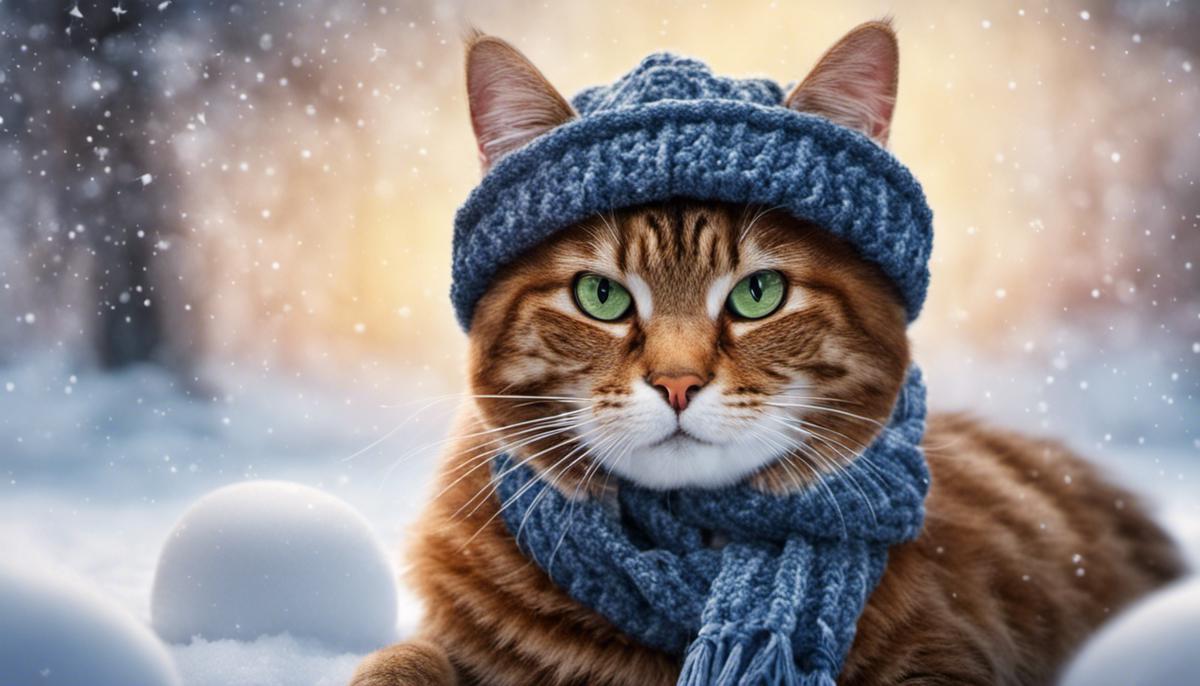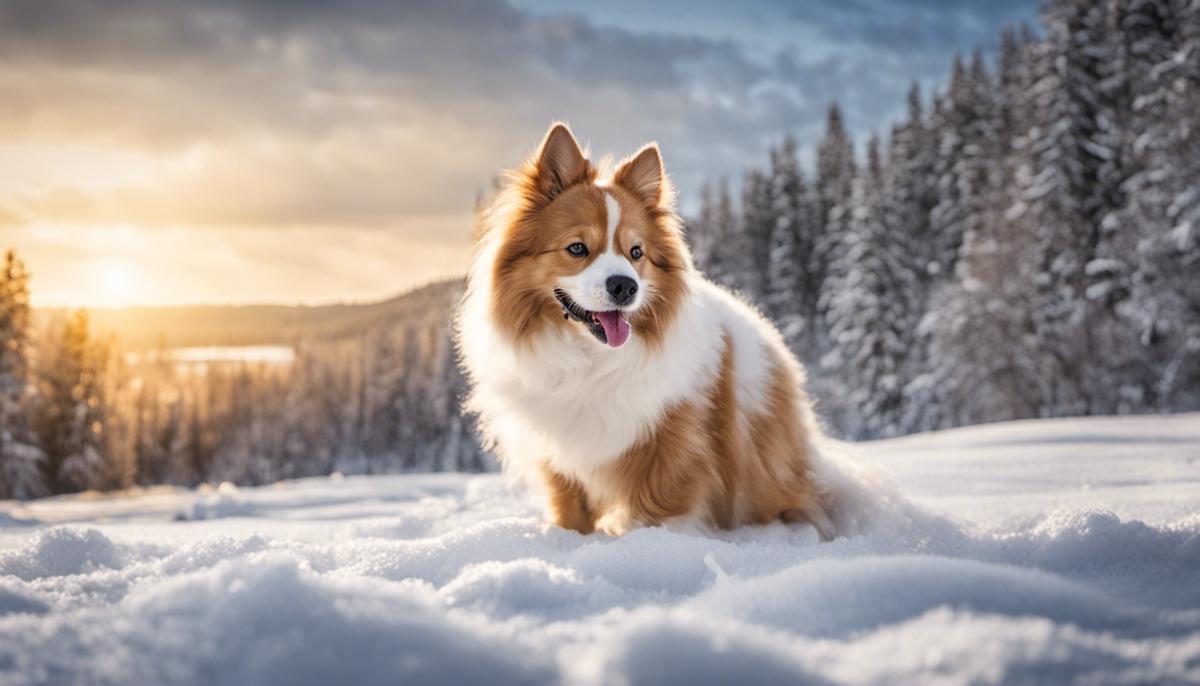As the winter season blankets the environment with a chilly hush, it is imperative to equip ourselves with the understanding and preparations needed to protect our beloved pets from the cold. Canadian winters, known for their severity, are especially challenging for pets, requiring due diligence from pet owners to ensure their pets’ overall welfare and happiness. This piece revolves around an in-depth understanding of how cold weather affects various pets, effective winter gear, indoor activities, and vital nutrition and health care tips. The intention is to authenticate resilience in pet care amid the bracing cold with a special focus on mitigating the impact of cold weather effects, sourcing the perfect winter gear, enriching their indoor time, and fortifying their health with the right diet and care.
Table of Contents
Understanding the Effects of Cold Weather on Pets
Caring for Pets in Frosty Temperature: The Health Impact of Cold Weather
When winter’s icy breath starts frosting our windows, we bundle up with thick coats, knitted scarves, and toasty mittens. But, have we ever wondered how our fur babies are faring in the cold weather? The adorable paws and fuzzy tails may look winterproof, but the fact is that chilly temperaments can have significant impacts on the health of our pets.
Perhaps the most noticeable impact of cold weather on pets is hypothermia. Just like us, pets aren’t immune to the downsides of icy temperatures. This condition, characterized by an abnormally low body temperature, manifests through signs of shivering, sluggishness, and in severe cases, a weak pulse and dilated pupils. It’s important to understand that even the fuzziest of pets need that extra layer of protection when the mercury dips. It means investing in some cute pet-jackets is every bit as necessary as it is fashionable.
Next up, is frostbite – the foreboding sibling of hypothermia. Our lovable companions might be brave, but they can’t ‘tough out’ icy conditions forever. Exposed skin on the ears, paws, and tail is especially susceptible. The signs are hard to spot since the affected areas often feel cold or brittle. Once warmed, they may swell or become red. In such instances, urgency is the key. Seek veterinary help without delay as frostbite can escalate into serious health complications.
Cold weather often brings along the not-so-festive gift of dry, itchy skin. Sounds familiar, doesn’t it? Well, pets experience it too. The winter air is particularly fond of zapping moisture from their skin. To help your pets, try running a humidifier inside your designated “pet area” to keep hold of some of that much-needed moisture. Additionally, premium pet shampoos with moisturizing properties can work wonders in keeping these annoying, scratch-inducing conditions at bay.
Just as we are cautious about falling ill during cold winter months, our loving pets are prone to illnesses, too. They can catch cold and flu much like we do, complete with the works – runny nose, watery eyes, a troubling cough, the whole nine yards. So, it’s essential to keep veterinary checks a top priority to ensure the overall well-being of our pets.
There’s also the frightening risk of antifreeze poisoning, as this substance is often used during winter. The sweet smell attracts pets, but ingestion can lead to serious, often lethal effects on their kidneys. It’s crucial to store antifreeze securely and mop up any spills immediately.
While winter seems to bring a host of potential perils for our pets, it doesn’t mean playtime should be solely indoor. Exercise is just as crucial in winter as it is in summer, but it’s all about doing it smartly. Shorter, more frequent walks in daylight hours, combined with a diet accommodating increased energy needs, can make winter an enjoyable season for both you and your four-legged pals.
In conclusion, a little extra caution can go a long way in safeguarding the health and happiness of our fur babies during frosty temperatures. So let’s bundle them up, keep them hydrated, and enjoy the joys of winter worry-free. Remember, their well-being is a loving responsibility we all signed up for when these adorable creatures walked into our lives with their wagging tails and innocent eyes.

Effective Winter Gear for Pets
Protecting Your Furry Friends: Essential Winter Gear for Pets
Winter can be a challenging season, particularly in Canada, where the cold months are accompanied by extremely low temperatures and heavy snowfall. While we often focus on preparing ourselves and our loved ones for this harsh season, it’s critical not to forget our furry friends- our pets. After looking at various potential winter hazards for pets, let’s now embark on the journey of finding the right winter gear to keep our pets safe, warm, and healthy.
When it comes to winter gear, a good pet-friendly jacket is non-negotiable. For many breeds, their natural fur isn’t enough to protect them from the cold. A protective jacket acts as an added layer of warmth. Waterproof jackets are excellent for snowy conditions, while sweaters can be a good option for milder temperatures or indoor use. Make sure to find something adjustable and comfortable, ensuring it doesn’t hinder your pet’s movement.
Next in line are paw boots that act as invaluable armor for your pets during winter walks. Snow, ice, and salt can seriously harm your pet’s paws – not to mention the risk of stepping on hidden hazards beneath the snow. Dog boots with a non-slip sole will provide a firm grip and protect their feet from the cold ground. For pets not comfortable with the boot concept, you can opt for pet-friendly ice melts or paw protectants.
Speaking of their paws, pet paw wax can work wonders. This product shields their paw-pads from the harsh winter elements. The wax forms a breathable, dense barrier that protects against snow, ice, and salt- making every walk a little bit safer and more comfortable.
Pet accessories don’t stop at attire. Cold winters can make the environment dry, both outdoors and indoors. A pet-friendly humidifier can provide relief for dry skin and prevent potential respiratory issues. While this might not be a traditional piece of ‘winter gear,’ it is valuable in maintaining a healthy environment for your pet during winter.
Leaving your pets in the car during winter can be as dangerous as doing so during summer. When traveling, always bring a thermal mat or a heated pet bed, available in self-warming or electric options. They keep your pets cozy, providing their own little heated havens.
Lastly, hydration is as essential in winter as it is in summer. Preventing dehydration helps protect your pet’s skin from drying out, and it keeps their immune system strong. Consider investing in a heated water bowl to ensure that your pet always has access to unfrozen drinking water, particularly when they’re outside.
During chilly Canadian winters, it isn’t just about bundling ourselves up in layer upon layer. As caring pet parents, we need to ensure our furry friends are well protected and comfortable too. With the right gear, they’ll be ready to face the winter weather confidently. Remember, they depend on us entirely. Let’s do our best!

Indoor Activities for Pets in Winter
As winter’s icy grip sets in, keeping pets active and thrilled indoors can be a little bit of a challenge. It’s crucial to come up with entertaining, creative and productive activities that our little buddies can do within the warm confines of the home. Here are some ingenious and engaging ideas to ensure our pets remain happy and active even during the coldest season of the year.
- Interactive Toys: These toys require pets to engage both physically and mentally. For dogs, puzzle toys filled with treats can keep them entertained for hours, while for cats, laser pointer toys can lead to an endless chase around the house. These are great ways to promote physical activity and mental stimulation.
- Indoor Agility Training: Set up a mini indoor agility course. Use boxes, hula hoops, and other safe household items as obstacles. This can help improve your pet’s flexibility, coordination, and keep them active. Remember to reward them with treats or praises to boost their confidence and make the activity more enjoyable.
- Indoor Fetch: Some open indoor space or a long corridor can turn into a perfect place for a hearty game of fetch. Use soft toys to avoid any damage around the home. This is a great way to keep their bones strong and their heart rate up.
- Hide and Seek: Hide treats around the house and let your pet sniff them out. This interactive game boosts their cognitive functions and provides both mental and physical exercise.
- Tug of War: This classic game helps relieve your pets’ natural urge to pull and tug. Use a sturdy rope or dog-friendly tug toy. Tug of war can be a great source of exercise for both the pet and owner.
- DIY Fun: Create a DIY scratch post for cats using carpet or rope remnants, or build a ball pit for smaller animals. The possibilities are endless.
- Craft Time: Having pets involved in crafting projects can be fun. Create toys or blankets for them during this time, it’s an investment in love and a great way to spend quality indoor time.
- Obedience Training: Winter can be an excellent opportunity to work on indoor training sessions. Whether it’s teaching new tricks or reinforcing old ones, these lessons engage the pet’s mind and expand their abilities.
Remember, the key is to keep activities safe, enjoyable and motivating for pets. These winter activity ideas not only keep pets occupied indoors but also strengthen the bond between pets and their humans. So, while the weather outside might be frightful, keeping pets delighted and active inside can be quite delightful!
Remember, a busy pet is a happy pet. So let’s embrace the season, adopt these ideas, and welcome winter for our furry family members!

Nutrition and Health Care Tips for Pets in Winters
Heading into the heart of winter, there’s a sense of anticipation for the festive holiday season, the joy of snow-covered landscapes, and of course, the cool cozy nights! But as we get our homes and families ready to brave the cold winters, let’s not forget about the furry members of our household – our beloved pets!
Pets, much like their human counterparts, also experience changes in their bodily functions and behavior due to the cold weather. You may have noticed they eat more, snuggle closer, or aren’t as active outdoors. These changes aren’t superficial. Our pets are intuitively responding to the colder temperatures.
Diet modifications during winters are necessary for pets – they need more calories to stay warm. Dogs, for example, can increase their caloric intake by up to 30% during winters, especially if they spend a lot of time outdoors. But remember, more food doesn’t mean cookies and treats, but healthy meals rich in proteins and fats. Consult your vet for an appropriate diet plan for your furry friends during winter.
Just as a hearty chili warms us from within during the cold days, warm meals can greatly benefit our pets too. A bowl of warm broth or heated canned pet food can be comforting for your pet. But make sure it isn’t too hot! An optimal temperature would be slightly warmer than room temperature.
Salts used to melt the snow on roads and sidewalks can be harmful for your pet. It can get stuck in your pet’s paws, causing discomfort or, when licked off, can upset your pet’s stomach. Do remember to clean your pet’s paws after walks to remove any road salts.
Allergic reactions are another concern during this season. Common winter allergens include dust mites and mold spores. Regular vacuuming and air purification can help keep these allergens at bay. Pay attention to any changes in your pet’s body or behavior. If you see signs such as excessively itching or sneezing, consult with your vet immediately.
Your pet’s mental well-being also requires attention during the winters. The earlier dark evenings and the inability to go out as often can lead to winter blues for your pet. An easy solution would be to schedule playtime indoors and keep them mentally stimulated.
Indoor games such as puzzles or activity feeders can be great fun for your pets. You could even weave in training activities during playtime, making it a productive and enjoyable experience for your pet. Crafting with your pet can be a joyful bonding activity too! Making pet-friendly toys out of waste material, for example, is a fantastic way to engage both yourself and your pet on a chilly afternoon.
Obedience training can also be a fun indoor activity when outdoor play isn’t possible. Training your pet to follow basic commands or practicing the ones they already know helps stimulate their mind and wards off winter blues.
In closing, each pet is unique, so require different levels of care during winters. However, equipped with these tips and vigilance for any changes in your pet, there’s no reason winters can’t be just as enjoyable for our pet friends as it is for us. So here’s to a happy, healthy winter for the entire family!

As pet owners, safeguarding our pets’ wellness during the unforgiving Canadian winter is our responsibility. We can do this by understanding the effects of cold weather, equipping them with suitable winter gear, keeping them engaged with indoor activities, and ensuring the right nutrition and health care. Each element, while important on its own, creates a comprehensive, robust framework when combined, allowing pet owners to navigate the winter months confidently. Remember, each pet species is unique and requires individual attention to their specific needs. Armed with these insights, every pet owner can become a harbor of warmth and care for their cherished furry, feathered or scaled companions in the chill of winter.

Zara Desertrose is an acclaimed fashion and lifestyle journalist with a Master’s in Fashion and Luxury Marketing. Known for her keen eye for style and cultural trends, Zara’s writing elegantly weaves together the latest fashion movements with lifestyle aesthetics. Her insightful critiques and trend forecasts make her a leading voice for anyone looking to stay at the vanguard of style.

